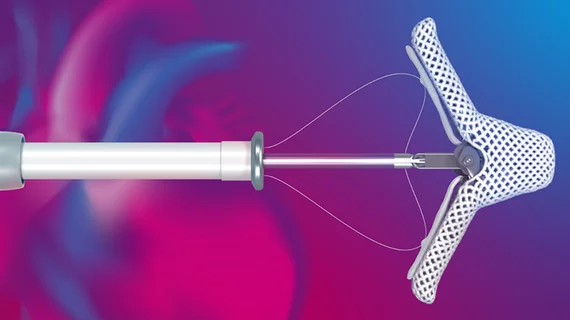Recurrent MR after TEER: Tracking data from nearly 700 MitraClip patients
Recurrent mitral regurgitation (MR) is seen in approximately 10% of patients who undergo a successful transcatheter edge-to-edge repair (TEER) procedure with the MitraClip device, according to new data published in Circulation: Cardiovascular Interventions.[1]
“Cumulative evidence has indicated the prognostic benefits of the MitraClip by reducing MR,” wrote first author Atsushi Sugiura, MD, PhD, a specialist with University Hospital Bonn in Germany, and colleagues. “However, the durability of the treatment remains a matter of debate. Recurrent MR has been observed more often after TEER compared with conventional mitral valve surgery.”
To learn more, Sugiura et al. examined data from nearly 700 patients who underwent TEER, previously known as transcatheter mitral valve repair (TMVR), from August 2010 to October 2018. All data came from the Heart Failure Network Rhineland registry.
The study’s primary endpoint was recurrent MR, defined as MR equal or greater to 3+, as seen on echocardiograph results after 12 months. All-cause mortality was the secondary endpoint.
Overall, recurrent MR was seen in 9.8% of TEER/TMVR patients after 12 months. Another 15% had died after 12 months. A flail leaflet and residual MR 2+ were identified as predictors of recurrent MR in primary MR. Larger left atrial volume and residual MR 2+ were identified as predictors of secondary MR. Among patients with secondary MR, the authors noted, a majority of patients “did not show any disorder of the clip or leaflets.”
“Previous studies on surgical repair have suggested that the lack of annuloplasty is responsible for the higher rate of recurrent MR after edge-to-edge repair,” the authors wrote. “In the present analysis, we found that left ventricular volume was not considered as a predictor in the multivariable model. Instead, recurrent MR was significantly associated with larger LA volume and residual MR 2+. Further studies are needed to delve into optimal treatment algorithms to prevent recurrent MR after MitraClip.”
Recurrent MR was associated with worse patient outcomes. Unplanned heart failure hospitalizations were more common, for example, as were repeat mitral valve interventions. Long-term survival — meaning 36 months after the initial 12-month follow-up period — was seen in 58.7% of patients with recurrent MR and 83.9% of patients without recurrent MR.
Some authors did report a prior relationship with Abbott, the manufacturer of the MitraClip device, but that relationship exists “outside the submitted work.” Abbott did not help fund the group’s analysis.
Related TEER Mitral Valve Content:
New risk score predicts mortality after TEER
Both younger and elderly heart failure patients benefit from TEER
CUTTING-EDGE findings shine new light on mitral valve surgery after failed TEER
Reference:

